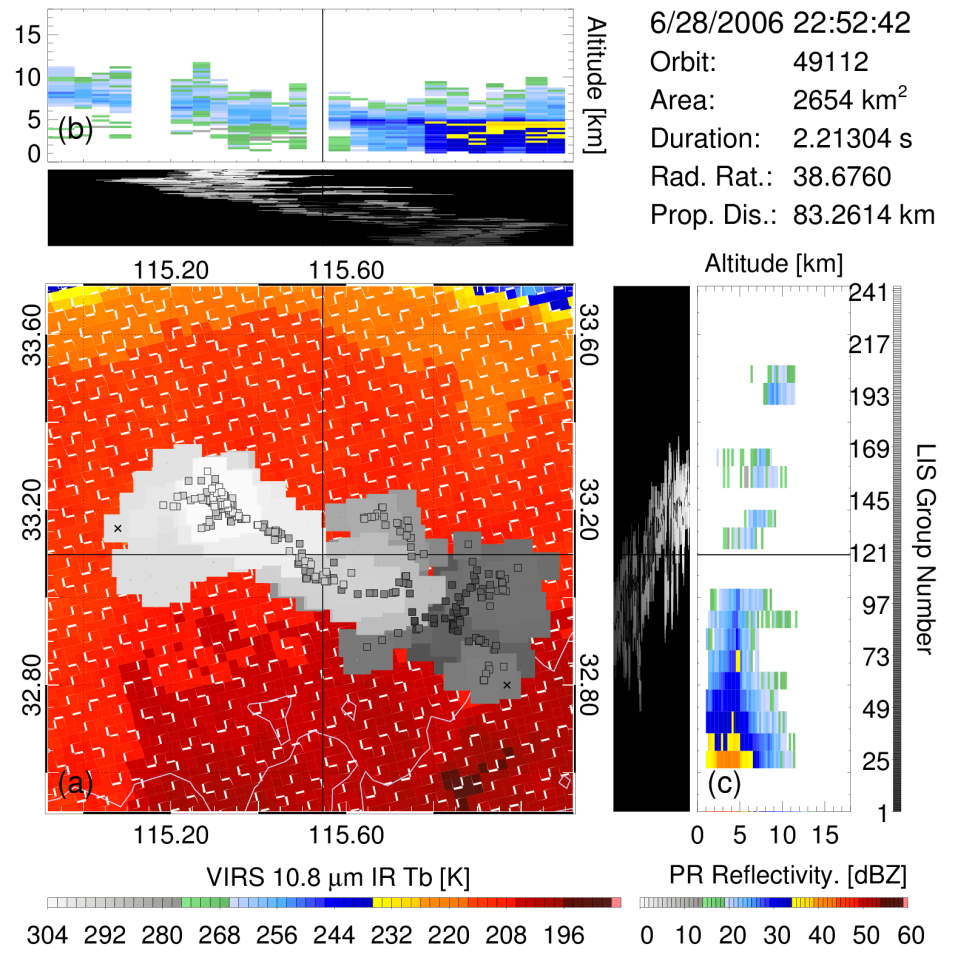Introduction
Some lightning flashes produce bright stationary optical pulses that illuminate a large fraction of the storm. Others are dim and move around in the cloud as they evolve. The Lightning Imaging Sensor (LIS) aboard the Tropical Rainfall Measuring Mission (TRMM) satellite surveyed lightning flashes of all shapes, sizes, and radiances across the tropics. Because LIS is an optical imager, however, it is unclear to what extent the observed characteristics of LIS flashes are influenced by scattering in the surrounding cloud.
Key Findings
- The TRMM sensor package includes a variety of instruments for describing the lightning-producing storm. These include a Visible and Infrared Scanner (VIRS), Microwave Imager (TMI), and Precipitation Radar (PR). This study integrates data from these instruments examine the characteristics of lightning flashes in the context of the radar structure and microphysics of the surrounding cloud. This information is summarized in a database of Illuminated Cloud Features (ICFs) that are similar to TRMM Precipitation Features (PFs), but bounded to the footprint of individual lightning flashes.
- Measured LIS flash characteristics are sensitive to cloud properties that influence scattering.
- LIS measurements may be sufficient to describe the morphology and structure of lightning flashes, including horizontal propagation.
- Oceanic flashes are brighter, larger, longer-lasting, and more prone to propagation that their land-based counterparts even when they occur in similar clouds at the same time of day.
